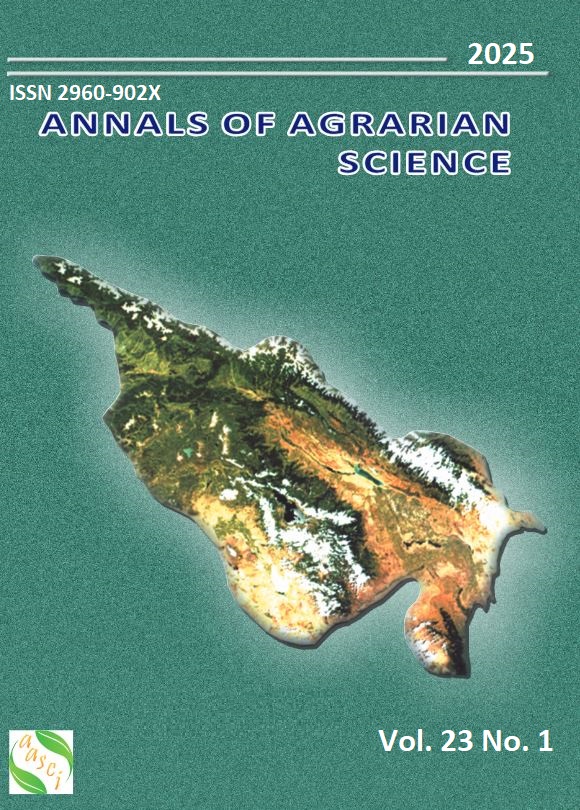Suppressive properties of Georgian biowaste composts against Pythium ultimum.
Keywords:
Biowaste compost, Pythium ultimum, suppressivenessAbstract
Goal of the mycological bioassays was the proof of suppressive properties of the Georgian biowastes, which were differentiated in additives (A. straw and other crop residues, B. wooden chips), in seasonal origin, year and maturation stage (A. autumns (compost from 2011, 11 months old), B. winter (compost from 2012, 16 months old). The trials took place in 2012 and 2013. The bioassay, inoculated substrates by Pythium ultimum, with peas (Pisum sativum L.) as sensitive host is an approved procedure of sterile sand system for the assessment of suppressiveness. The statistical analyses in a 3-way anova procedure (A. year, B. substrate, C. infection level) achieved some noticeable results. The effects of compost charges of the different years were assigned into similar groups. Thus a year effect could be neglected, in addition the question of seasonal origin and maturation stages. There was a tendency that compost enriched by wooden chips seemed to be more effective in terms of potential regulations against soil-born diseases. The other type of compost was slightly less suppressive, but still significant in most of the cases. Parameters of assessment were fresh matter of above-grown biomass, sprout length, emergence rate, the disease severity and the reduction of disease incidence.



